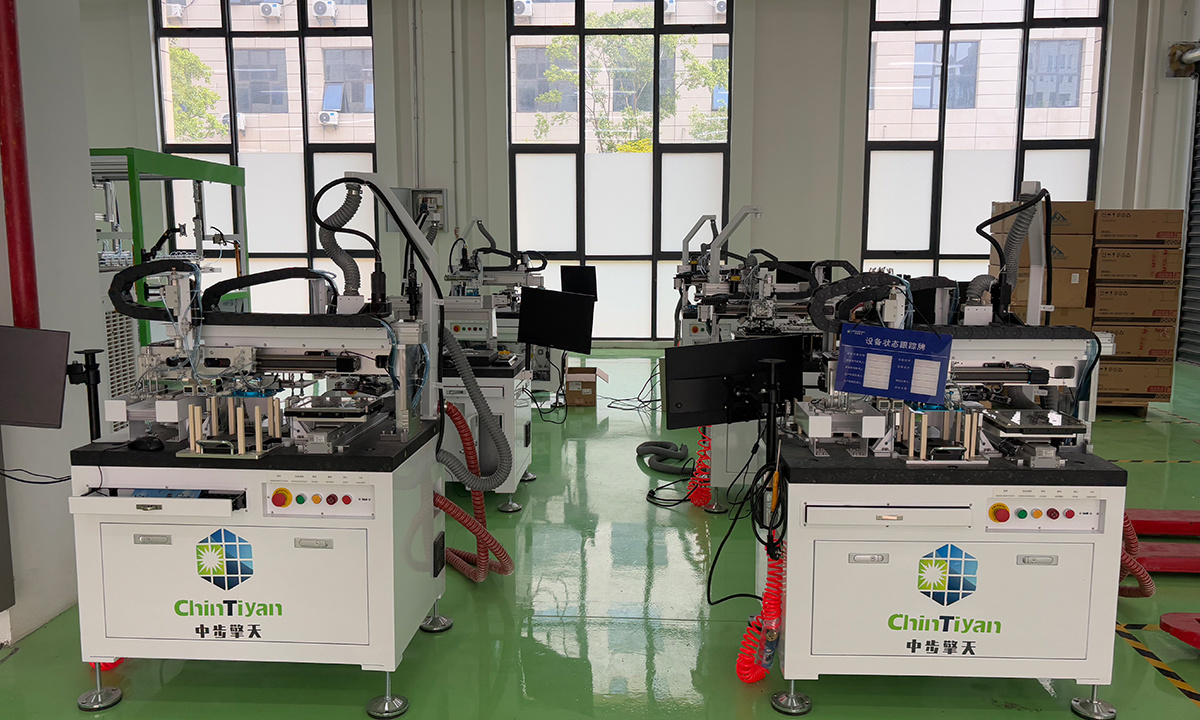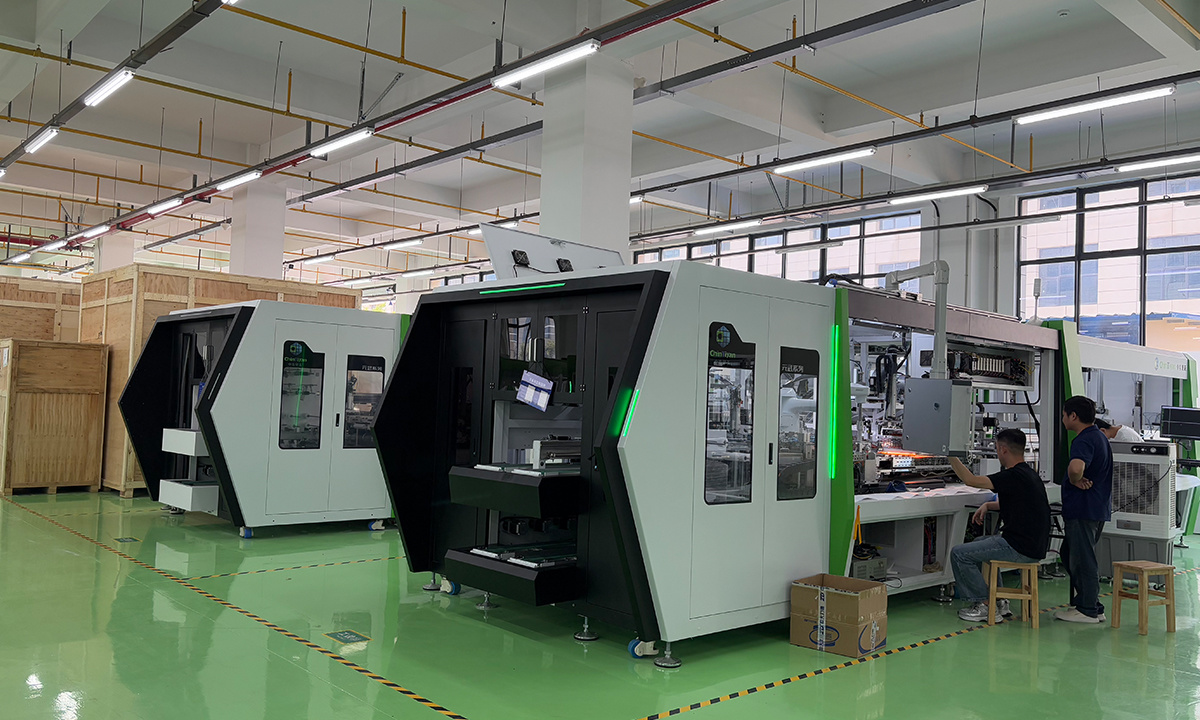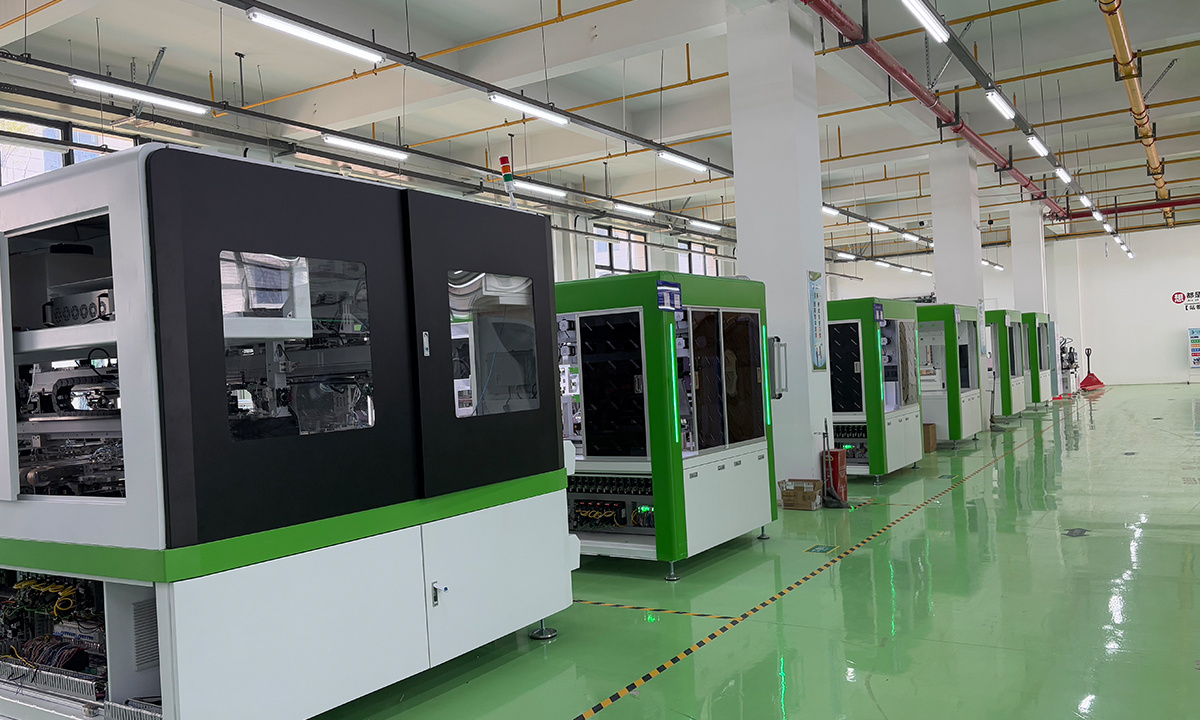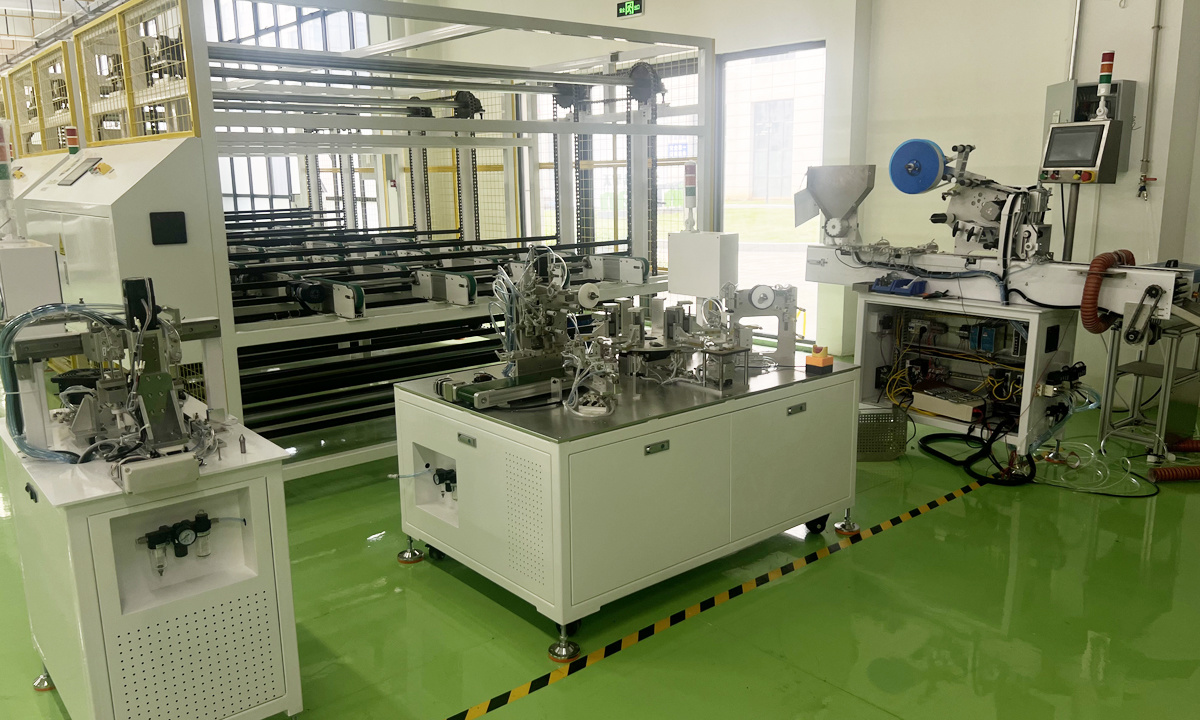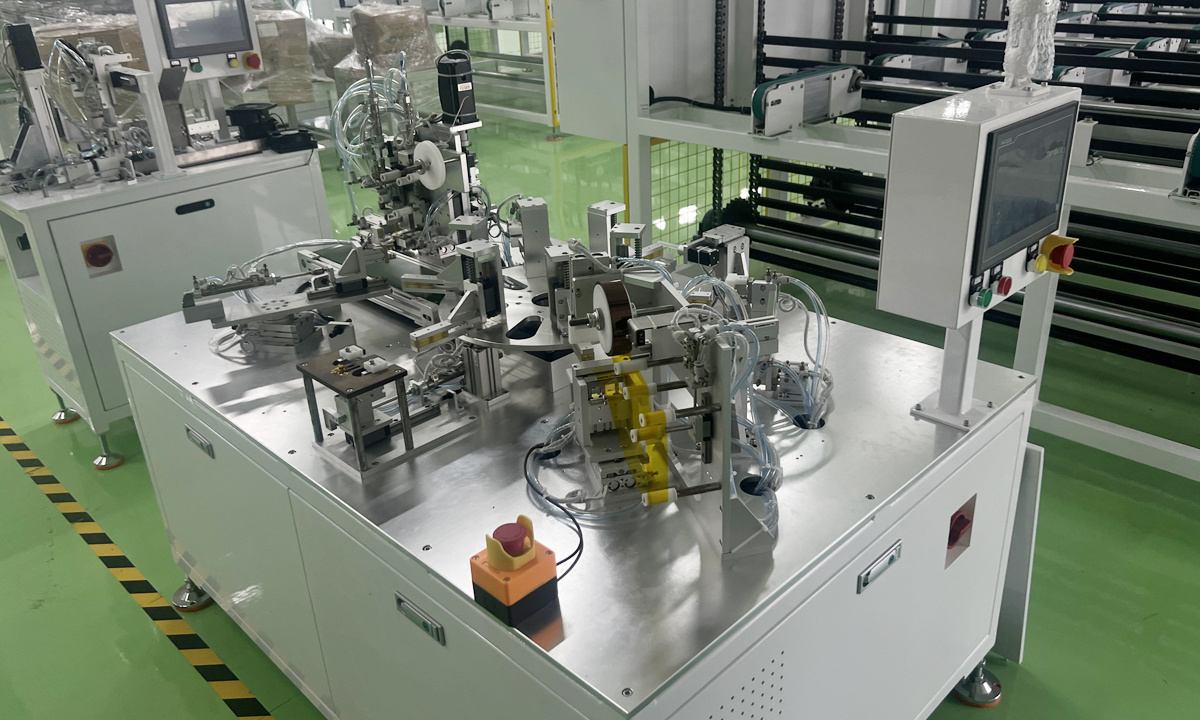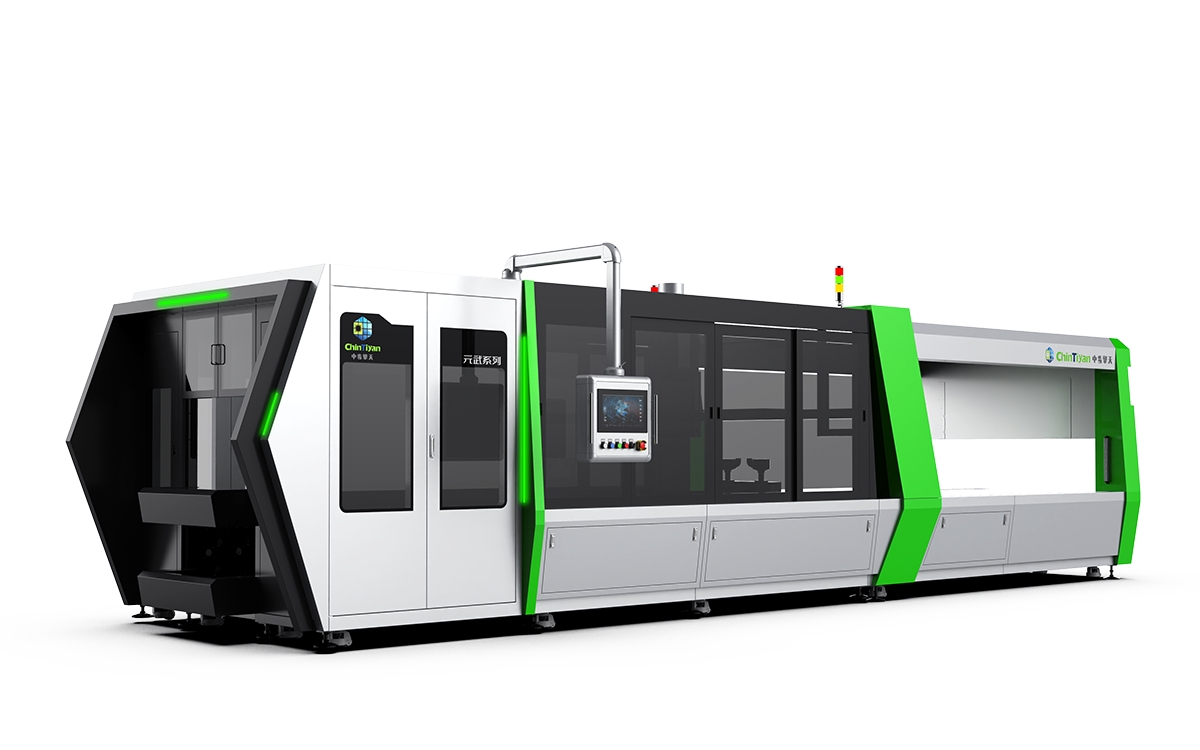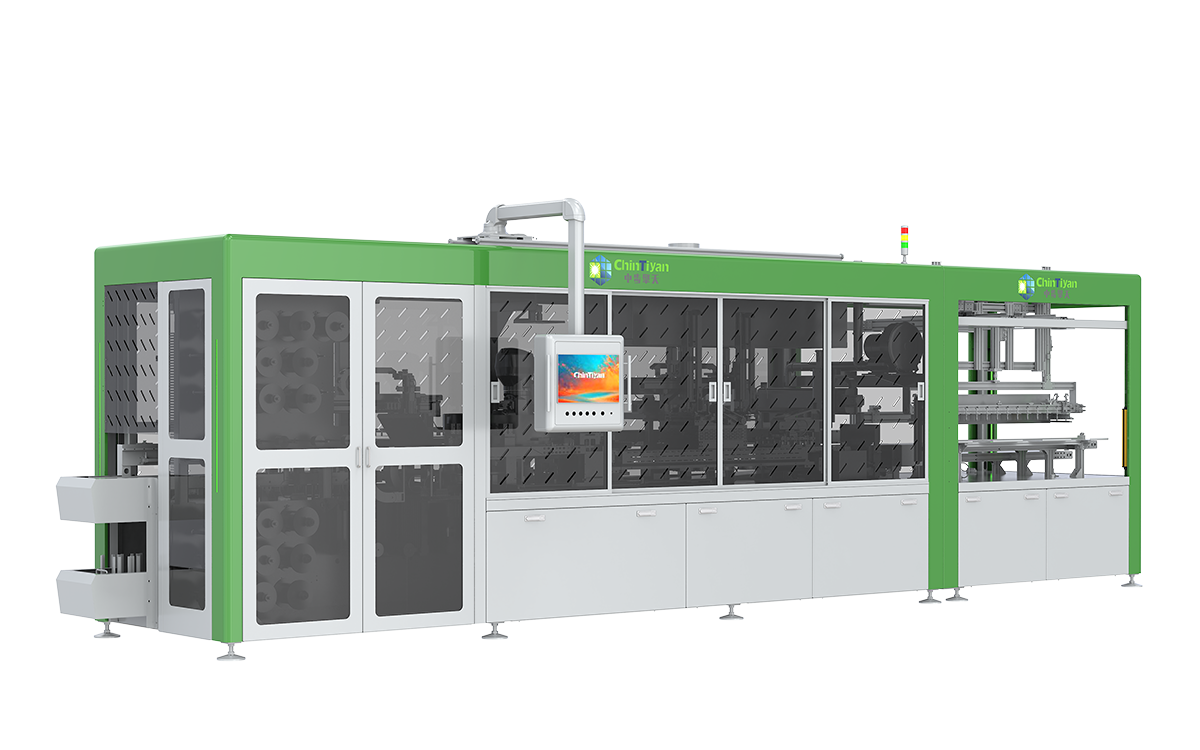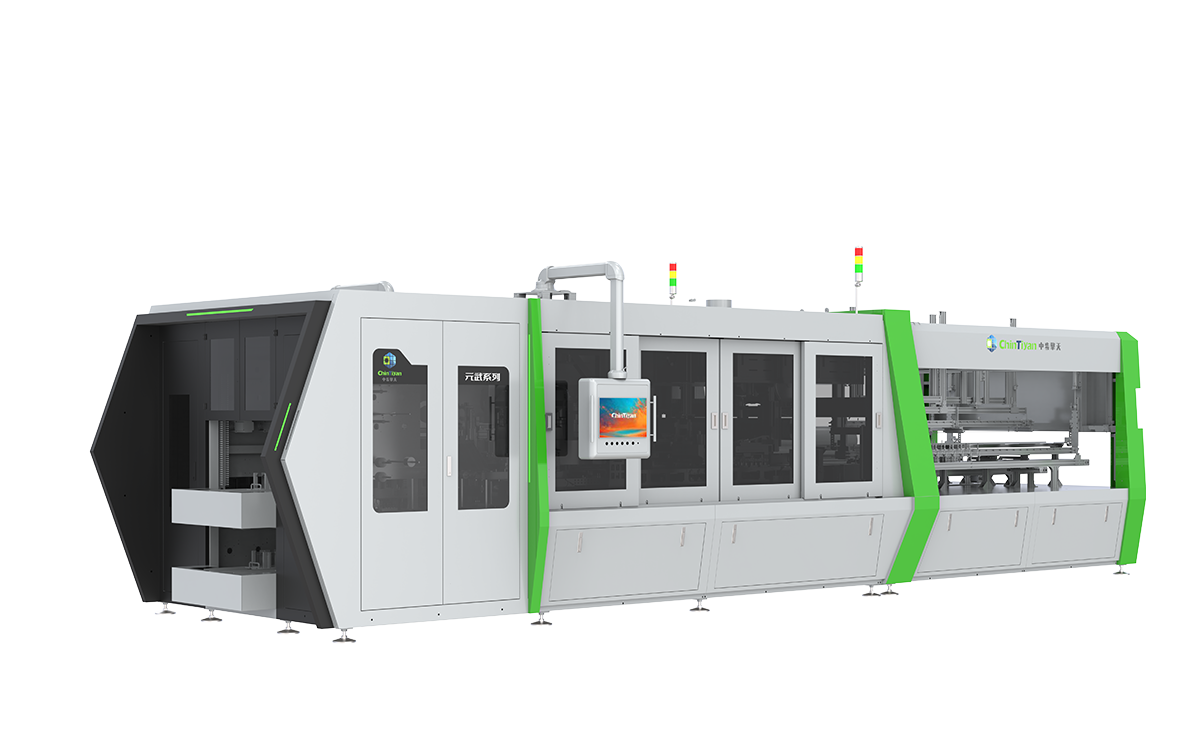PV Module Lay-up & Bussing Integrated Machine
Classification:
Model: CT-SPD150 Automated equipment that integrates cell string layout and busbar welding. 1. Uptime ≥ 95% 2. Fragmentation Rate ≤ 0.25% 3. Capacity: 8000 half pieces/hour. 4. Number of Busbars: 3BB-20BB(3BB/5BB/10BB/16BB/18BB/20BB).
Contact:
Details Introduction
The Photovoltaic Module Ultra-High-Speed Automatic Lay-up & Bussing Integrated Machine is an automated equipment that integrates cell string layout and busbar welding. It integrates various advanced automation technologies such as motion control cards, sensors, servos, welding heads, linear modules, gear rack modules, etc., to achieve fully automatic processing from cell string loading and layout to cell string convergence. It can be seamlessly connected with the string welding machine to form an automated product production line that integrates marking welding, string welding, layout, and stack welding to achieve from slice to module.
| 6 welding heads weld simultaneously to ensure the equipment welding rhythm | Realize the automated production of cell string layout and busbar welding. |
|
Precise positioning, repeatability up to ±0.20mm |
Full-panel string layout with suction,the solar cell position is accurate when it is transferred to the next station. |
|
3 busbar cutting and laying stations, fast bending, continuous material waiting state |
Capacity: 8000 half pieces/hour (12 pieces/string) |
Parameter
Equipment Specification
| Model |
PV Module Scribing-Laying-Welding Combo Machine |
| Uptime rate | ≥ 95% |
| Capacity | 8000 half pieces/hour (12 pieces/string) |
| Fragmentation rate | Solar cell 135um to 150um: Monocrystalline ≤ 0.25% |
| Detection | CCD |
| Welding Method | Electromagnetic induction welding, 7 welding heads |
| Stringing Accuracy | ±0.20mm |
| Lead Angle and Deviation | 90° adjustable, increase by 2~3° |
| Size | 166~230mm crystalline silicon cell |
| Number of Main Grid Lines | 3BB-20BB |
| Cell Thickness | 135~230±10µm |
| Module Input Height | 950±30mm |
| Module Output Height | 950±30mm |
|
Maximum Size of Compatible cell string (length*width) |
2550mm*1450mm |
| Defective Rate of String | ≤3% |
| Power Supply | Three-phase 380V, 50Hz, three-phase five-wire system (L1/L2/L3/N/PE), incoming line specification 4x16mm²+1x10mm² |
| Power | Average power 8KW, peak power 15KW |
| Gas Supply Demand | Air pressure: 0.6-0.8Mpa, air consumption: ≥4000L/min, the air intake manifold uses three φ16mm hoses to intake air simultaneously |
| Compressed air quality requirements: Maximum solid particles: 15μm (level 3), minimum pressure dew point: +3℃ (level 4), maximum oil mist concentration: 5mg/m3 (level 4) | |
| Factory Standard Solar Cell Specifications | Standard 182/16BB main grid line spacing 10.8mm |
| Factory Standard Module Specifications | 166-230 cells: 6 strings*10 half cells*2, 6 strings*12 half cells*2, cell spacing -0.5-4mm, string spacing 1-6mm. String length range (820-1260mm) |
| Factory Standard Compatible Glass Specifications | Width (1010-1450mm)*Length (1700-2550mm) |
| Factory Standard busbar Specifications | The material is supplied in roll form, with a thickness of 0.18-0.40mm, a width of 4mm, 5mm, 6mm, 8mm, and a roll weight ≤30Kg; Party A needs to provide the converging reel drawing. |
Keyword:
PV Module Lay-up & Bussing Integrated Machine
Production Strength
What is Our Collaboration Process?
We consider after-sales service the beginning of a long-term partnership, not the end of a transaction. We provide a full-spectrum "service ecosystem" that covers the entire journey from initial discussion to stable mass production.
1.Collaboration and Delivery Process
Requirement Confirmation & Technical Discussion: We start with in-depth communication to clarify product specifications, capacity goals, and technical requirements, providing a preliminary technical solution.
2.Plan Finalization & Contract Signing: Upon reaching a technical consensus, we proceed to draft and sign the commercial contract and technical agreement.
3.Production Line Construction & Equipment Manufacturing: In parallel, you can proceed with plant construction/renovation, utility preparation, and team building. We simultaneously conduct lean manufacturing and assembly of the equipment.
4.Factory Acceptance Test (FAT): After assembly and debugging, we warmly welcome you to our facility for a pre-acceptance test to verify equipment performance firsthand.
5.Maritime Logistics & On-site Installation: Following FAT, equipment is shipped via maritime logistics to your plant. Our engineer team will be on-site to guide installation and positioning.
6.Commissioning & Site Acceptance (SAT): After installation, our engineers perform precise commissioning and complete the final Site Acceptance Test, ensuring the line meets all agreed performance metrics.
7.Training & Guided Production: We provide comprehensive operation and maintenance training, and guide you through small-batch trial production to ensure your team can operate the line independently.
8.Long-term Support & Continuous Improvement: Our comprehensive long-term after-sales service begins after mass production, including remote support, spare parts supply, periodic visits, and technical upgrade services, ensuring your sustained production and future growth.
Is BC technology the Future?
BC (Back Contact) technology is undoubtedly a key direction for next-generation high-efficiency PV modules. Its busbar-free front side offers not only superior aesthetics but also significantly reduces shading, leading to higher light absorption and increased power output. Rather than simply declaring BC as the only future,In fact, BC is a platform technology that can be combined with techniques such as Topcon HJT and perovskite tandem cells to squeeze out the last drop of efficiency gains.
Therefore, we believe BC technology will remain at the forefront of the upcoming technological transformation, making now the opportune moment to invest in BC.
What Information is Required to Establish a Production Line?
This is straightforward.
Firstly, we need to understand the type of modules you wish to manufacture: conventional or flexible, large-format or small-format, and whether any specialised processes are required. Secondly, we require details of your production line capacity requirements – be it a 50MW manual line or a 2GW fully automated dark factory.
Finally, if you have already constructed a facility for your project, we need to know the dimensions of the building; a CAD file would be most helpful if available. Naturally, should you be unfamiliar with photovoltaic module manufacturing, there is no need for concern. We shall recommend the most suitable production line design based on your market requirements.
Why We Say "NO" to Fast Quotes ?
Whilst we offer some of the most competitive pricing in the industry, we firmly believe that a well-designed production line holds far greater value than the mere pursuit of low cost. A single quotation cannot suit all. Only after gathering the necessary information and undertaking a bespoke design tailored to each product's characteristics and process requirements can we provide a quotation truly worthy of discussion.
Related Products


